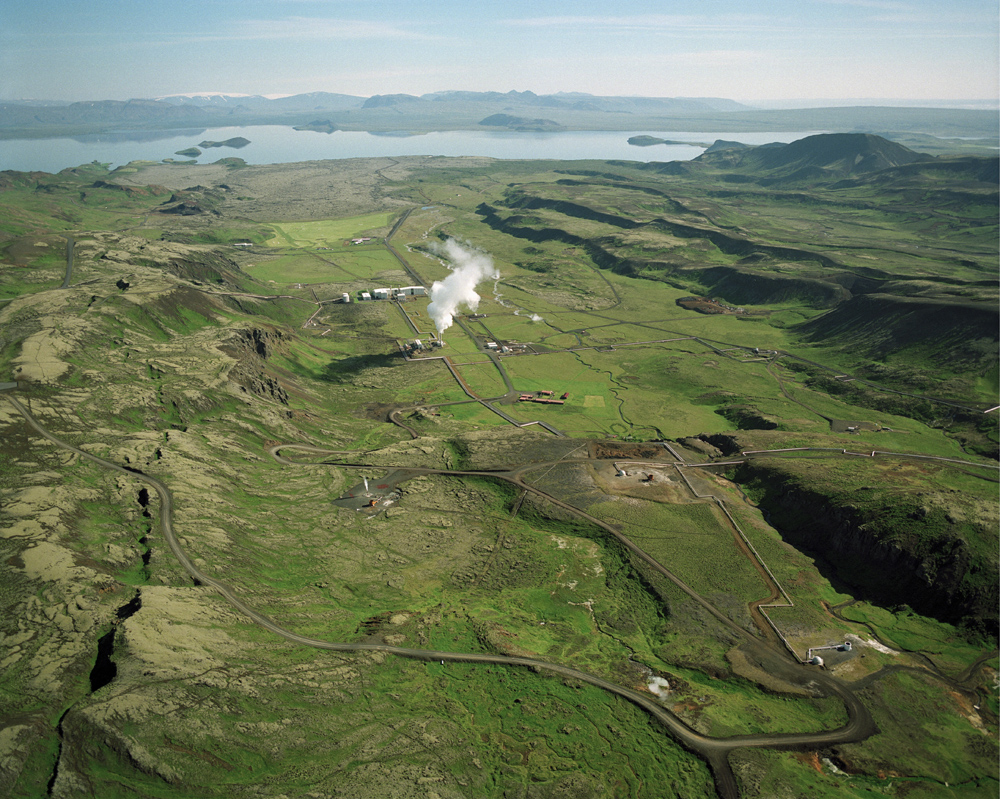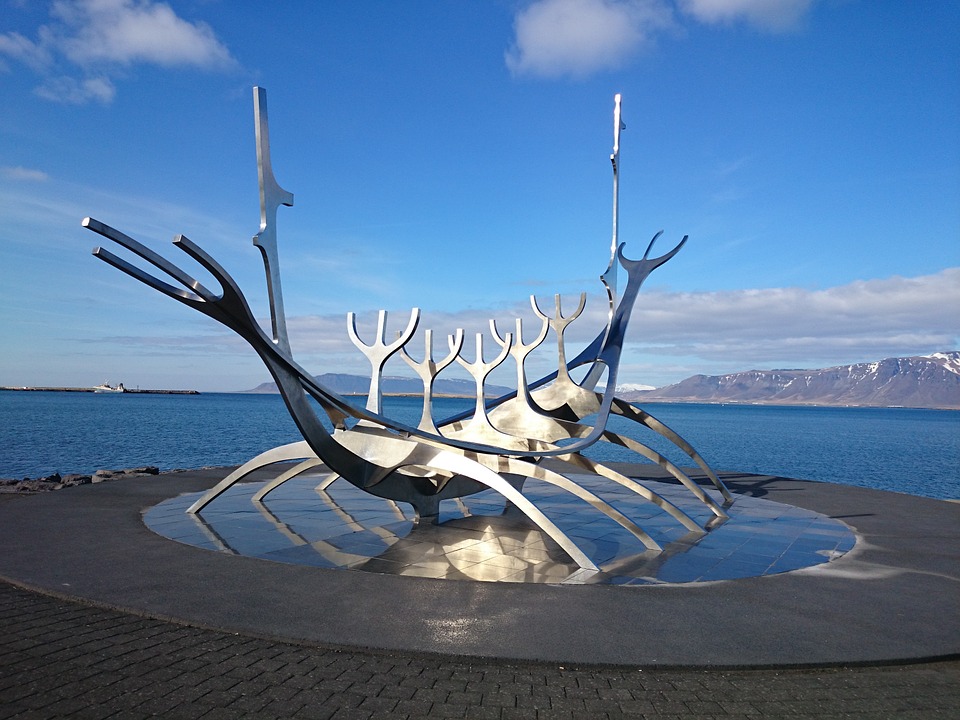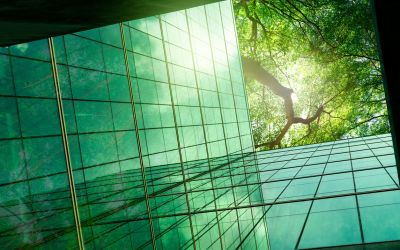Iceland’s pathway to sustainability
Guðni Th. Jóhannesson, President of Iceland, gives a highly relevant insight into two important facets of his country’s history, geothermal energy and sustainable fishing.
The history of Iceland, which spans close to 1,200 years, can be presented in two parallel and striking tales: one is a story of energy usage, the other a story of fishing. Both these narratives describe a development from primitive exploitation to sustainable and highly rewarding practices.
The Icelandic energy story
To start with energy: when Iceland was settled in the 9th century it had considerable forests which provided fuel for the population. Obviously wood was needed for heating the primitive housing in the rather chilly island, and it was needed for the production of charcoal and, by extension, for iron-working. Unfortunately the forests, which never contained a lot of tall trees anyway, were very vulnerable and Iceland lost practically all its trees in less than 400 years. The loss of trees, along with volcanic eruptions and climate changes, caused some serious desertification as the wind could erode the grasslands more freely when the trees were gone. Ahead of us were centuries of poverty when the population had to squeeze what we could out of peat and other low-grade combustibles.
The forests, in other words, had been harvested without foresight. Without the notion of sustainability, without planting trees to replace those that were used, the valuable forest asset was destroyed.
Then, around 1900, fossil fuels triggered a historical shift for us like so many others, and the use of coal and oil in our
growing fishing fleet made possible the wonder of trawler fishing, with  large-scale harvesting of our productive fishing grounds.
large-scale harvesting of our productive fishing grounds.
We also used fossil fuels to heat our houses, of course. Fortunately, however, we also started harnessing some of
the hydropower resources we had to produce electricity so we could light up our streets and houses.
This all worked very well far into the 20th century until oil prices started climbing dramatically in the 1970s. The oil crisis had a serious impact on our national economy, and we realised that something had to be done: we had to look at other sources of energy to survive. Accordingly a large project to produce electricity from geothermal steam was started not far from the capital city, Reykjavik, and under its auspices. This geothermal power plant became a huge success and was soon followed by other similar and more technically advanced power plants in other regions.
At the present moment we are looking at the option of adding wind turbines to our primary energy mix; and we are
also working hard to reclaim some of the forests that we so sadly lost in earlier centuries.
Hydropower and geothermal energy now account for more than 99 per cent of our electricity production. They are sustainable and clean energy sources that we are proud to present to visitors. Most of our houses are heated by geothermal district heating systems.
Fishing: problems of success
The other area of interest, in the case of Iceland, is the management of our marine resources. For the first thousand years, Iceland was to a large extent a society dominated by farmers. The people who went fishing at designated harbours around the country were farm hands who brought their catches back to the farms, and during this period the law prevented any urbanisation from taking place.
During these centuries, boats were small and dangerous and fishing gear was primitive and inefficient, but there was plenty of fish. In the first decades of the 20th century this changed dramatically as the fishing fleet was motorised and generally modernised. Of course this strong fishing sector brought great wealth to our society, and we managed to build schools and roads, and import cars and such like; in short, to establish a modern and fairly advanced society in the decades following the Second World War.
But then, in the early 1970s, it became clear that the fishing sector was heading for collapse. First, it was necessary to exclude foreign fleets from the waters off Iceland and establish an exclusive economic zone, in line with international developments. Domestically, it was clear that if the trend continued at the same pace for a few more years the industry would be catching fewer and fewer tons of fish, even while investing more and more. Each company had to invest more money in better ships to have a chance of catching the few fish that were left more quickly than the others. It was a classic case of the law of diminishing returns: the industry was facing imminent bankruptcy while depleting the stocks.
At this point, in 1983, an entirely new set of rules for the fishing sector was introduced by law. These stated that no one could fish in Icelandic waters without have a fishing quota, a designated percentage of the total allowable catch of each species. The percentage each boat was allocated was based on the quantity it had landed in the preceding years; the total allowable catch was determined by the Ministry of Fisheries, based on annual recommendations from the Marine Research Institute.
 A few years later, a new law was passed providing for the transfer of quotas, which meant that an efficient fishing company could buy quotas from another company that was going out of business or one that wanted to switch to another fish species. This system of transferable quotas had several faults and brought problems to many, especially to small fishing towns which might suddenly discover that their quota had been sold to a larger town somewhere. Also, there are recurrent debates in the country about the extent to which the fishing companies should pay levies for their access to the fishing stocks, the common natural resource of the Icelandic nation. But there were two decisively positive consequences the quota system entailed: the fish stocks were preserved, and the industry was brought out of the red and into the black – back into profit.
A few years later, a new law was passed providing for the transfer of quotas, which meant that an efficient fishing company could buy quotas from another company that was going out of business or one that wanted to switch to another fish species. This system of transferable quotas had several faults and brought problems to many, especially to small fishing towns which might suddenly discover that their quota had been sold to a larger town somewhere. Also, there are recurrent debates in the country about the extent to which the fishing companies should pay levies for their access to the fishing stocks, the common natural resource of the Icelandic nation. But there were two decisively positive consequences the quota system entailed: the fish stocks were preserved, and the industry was brought out of the red and into the black – back into profit.
Positive outcomes
What we as a nation have gained in economic terms is considerable. It has been calculated that Iceland saves what amounts to its annual GDP every 20 years by using geothermal house heating instead of oil. Furthermore, many of our fishing companies are very well off now, and they have been expanding into other industries and to other countries. At the same time, many of them strive to make better use of what is brought ashore, to make valuable products from what used to be thrown away a couple of decades ago, such as the bones, heads, intestines and skin.
What I find interesting in these stories, in the development I have briefly outlined, is that the movement from short- sighted exploitation to controlled and sustainable use of valuable resources has not been driven by subsidies. The net result for us as a nation of using green energy and of carefully controlling the utilisation of our marine resources has not been increased costs but, quite the contrary, sharply rising profits – in both cases.
While appreciating the fact that natural resources are not equally distributed among nations, I strongly believe that it is worthwhile to give our experience in Iceland some careful thought.
Read the full Climate Action 2016/17 Publication here








